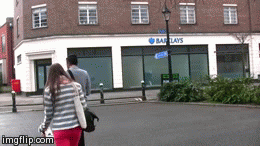Title: Christopher
Plot synopsis:
Follows a 17 year old boy suffering from OCD and social anxiety as he meets a girl in his university class, and shows how their relationship affects them both.Genre:
- Rom-com drama
- It could be argued that our film opening is also of the coming-of-age genre, as it revolves around difficulties young people face and how they learn to deal with them.
To discover the conventions of the genre, we researched films that were relevant to our topic matter, such as:
 |
| It's Kind Of A Funny Story (Anna Bowden, Ryan Fleck, 2010) |
 |
| Adam (Max Mayer, 2009) |
 |
| 50/50 (Jonathan Levine, 2011) |
 |
| Perks Of Being A Wallflower (Stephen Chbosky, 2012) |
See the Prezis below to view some of our findings about the conventions and how we used, developed or challenged them:
Character conventions
Notes on the above presentation:
'Quirky Female Character' - Often the character is similar to the lead male, in having some type of disorder or issue, (Jennifer and Noelle), we decided to create a binary opposite to our lead male.
'Quirky Female Character' - Often the character is similar to the lead male, in having some type of disorder or issue, (Jennifer and Noelle), we decided to create a binary opposite to our lead male.
Below is the link to Building Blocks:
http://freeplaymusic.com/volumedetail.aspx?volume=1456
Notes on prezi above: Titles:
We tried to ensure that our titles remained as conventional to the genre as possible (as shown in the prezi), as we wanted them to connote the genre properly. As shown with Struck By Lightning, the titles conventionally:
http://freeplaymusic.com/volumedetail.aspx?volume=1456
Notes on prezi above: Titles:
We tried to ensure that our titles remained as conventional to the genre as possible (as shown in the prezi), as we wanted them to connote the genre properly. As shown with Struck By Lightning, the titles conventionally:
- Have a simple font
- Are black or white (simple colour scheme)
- Are positioned so that they don't interfere with the shot
 |
| Simple font, White, Put in corner so doesn't distract the audience |
 |
| Conforms to conventions: White, Simple font (New Cicle) to connote genre, positioned so it doesn't distract the audience |
SCRIPTING:
We decided that the dialogue should be slightly humorous (with his reactions), but also highlight his social anxiety. We discovered that both It's Kind of A Funny Story and Struck By Lightning did this, contrasting serious situations with slight humour.NARRATIVE STRUCTURE
In terms of narrative structure, we decided to use Todorov's theory of Equilibrium -> Disequilibrium -> New Equilibrium.
How this is applied to our FILM OPENING
 Equilibrium: Christopher's OCD habits
Equilibrium: Christopher's OCD habits

Disequlibrium: Meeting Naomi

New Equilibrium: Naomi and Christopher walk off together, indicates the beginning of a friend/relationship
Our Overall Film Narrative Structure
Equilibrium: Christopher's routine of dealing with his OCD, showing his regular habits
Disequilibrium: Christopher meets Naomi. Relationship develops and her family disapprove. Equilibrium: Christopher's OCD habits
Equilibrium: Christopher's OCD habits
Disequlibrium: Meeting Naomi

New Equilibrium: Naomi and Christopher walk off together, indicates the beginning of a friend/relationship
Our Overall Film Narrative Structure
Equilibrium: Christopher's routine of dealing with his OCD, showing his regular habits
New Equilibrium:
Naomi and Christopher get back together, her family and friends come to like Christopher. (Typical happy ending, conventional of the genre)
Other Narrative theory that we have used:
We also use Barthes' Enigma code theory, creating questions like:
- Why does Christopher have OCD?
- Why the number of times that he does everything? i.e 3 taps of the shoe
- What will end up happening with Naomi and Christopher?
As well as Levi Strauss' theory of 'Binary Opposites':
- Christopher with social anxiety and OCD
- Naomi who is socially confident, outgoing, slightly childish
- Challenges convention that love interests must be similar, i.e. It's Kind Of A Funny Story, Silver Linings Playbook





















.gif)








.jpg)













